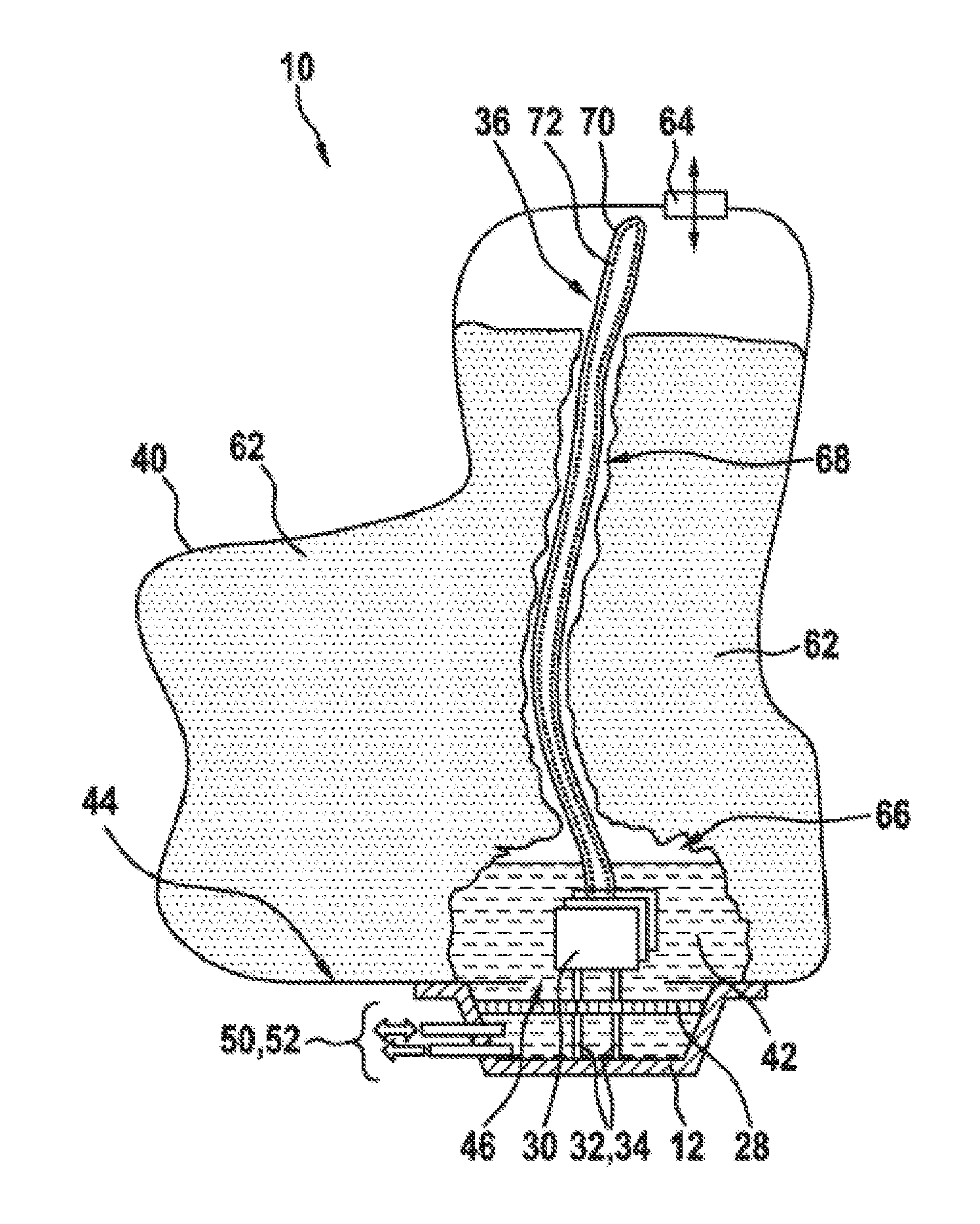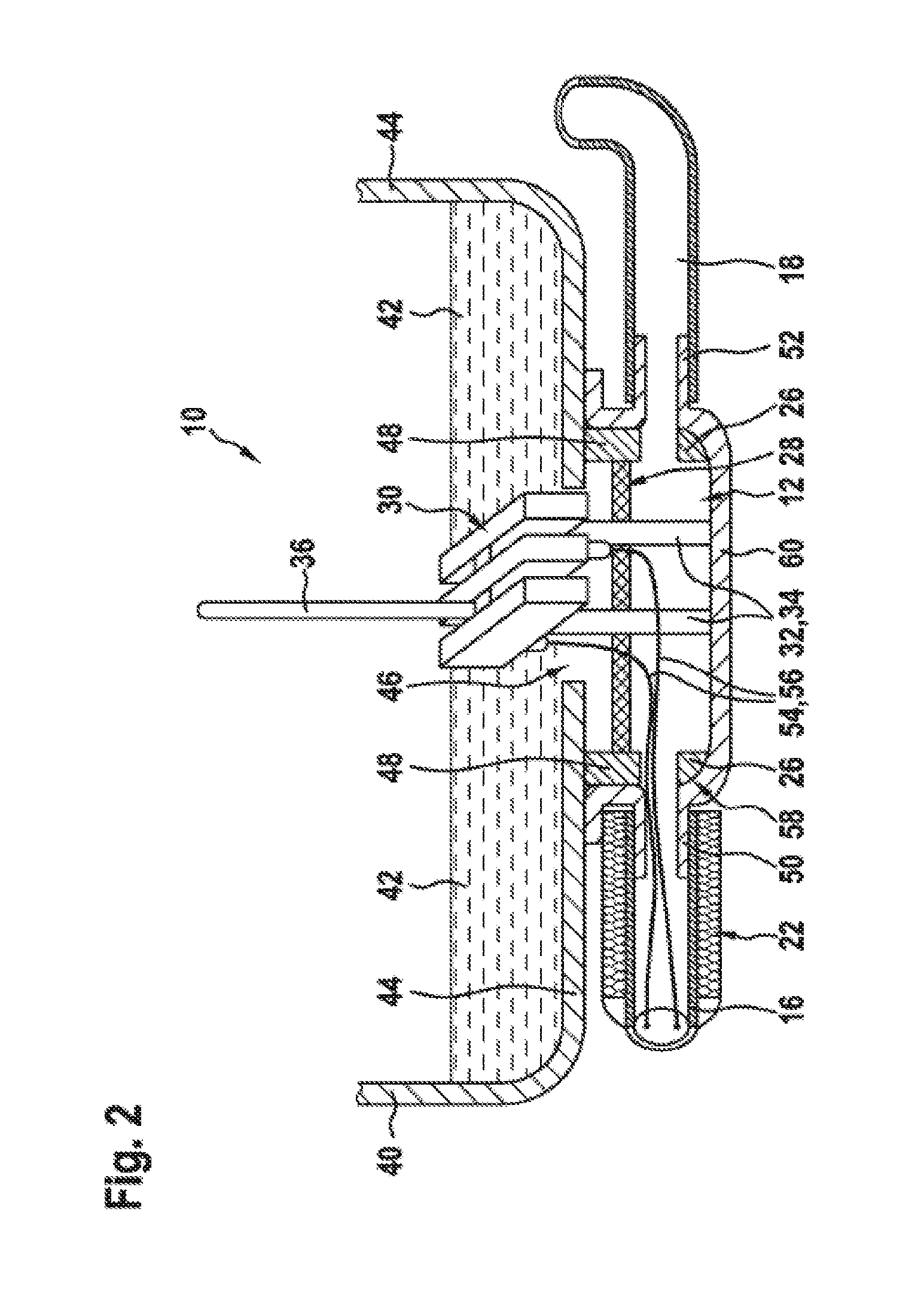Device for supplying a reducing agent to an exhaust-gas aftertreatment system
a technology of exhaust gas aftertreatment and reducing agent, which is applied in the direction of machines/engines, mechanical equipment, transportation and packaging, etc., can solve the problems of preventing the freezing of the fill level sensor, requiring and the device for measuring the surface level of the vessel requires an extremely large amount of technical investment. , to achieve the effect of preventing measurement errors, simplifying structural design, and improving suctioning behavior
- Summary
- Abstract
- Description
- Claims
- Application Information
AI Technical Summary
Benefits of technology
Problems solved by technology
Method used
Image
Examples
Embodiment Construction
[0043]FIG. 1 is a schematic illustration of the device according to the invention.
[0044]The device 10 comprises inter alia an approximately pot-shaped pump sump 12 which is connected to a delivery module 14 via a heated and ice-pressure-resistant suctioning line 16. By contrast to the pot-shaped form of the pump sump 12 shown in the example, said pump sump may for example also have the geometric form of an internally hollow truncated cone portion with a distinctly oblique encircling wall. To the pump sump 12 there is connected a fill level sensor 18 which has, at its upper end, a vent 20. To minimize the heat losses, both the heated suctioning line 16 and also the fill level sensor 18 are completely surrounded by an insulation sheathing 22. The pump sump 12 is fastened in the region of a tank opening on the underside of a tank not illustrated in FIG. 1. The tank serves for storing the reducing agent required for carrying out the SCR method. As reducing agent for the SCR method, use ...
PUM
 Login to View More
Login to View More Abstract
Description
Claims
Application Information
 Login to View More
Login to View More - R&D
- Intellectual Property
- Life Sciences
- Materials
- Tech Scout
- Unparalleled Data Quality
- Higher Quality Content
- 60% Fewer Hallucinations
Browse by: Latest US Patents, China's latest patents, Technical Efficacy Thesaurus, Application Domain, Technology Topic, Popular Technical Reports.
© 2025 PatSnap. All rights reserved.Legal|Privacy policy|Modern Slavery Act Transparency Statement|Sitemap|About US| Contact US: help@patsnap.com



